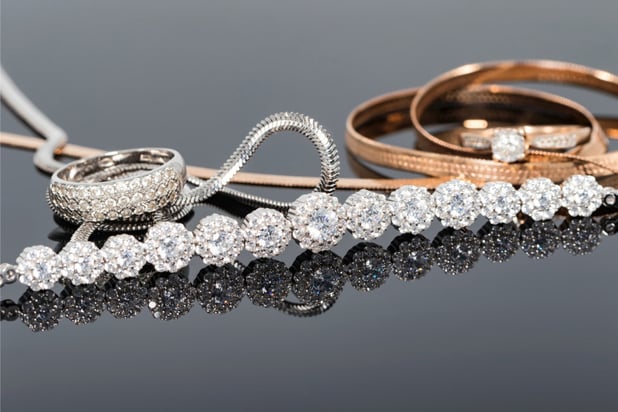

Certain pieces of jewelry hold more than just sentimental value. Engagement rings, wedding bands, and family heirlooms such as a sapphire necklace passed down through generations can also be expensive assets that, when lost, are often difficult to replace. For those who own these types of fine jewelry, taking out some form of protection is essential. This is where jewelry insurance comes into play.
Jewelry insurance works just like other types of coverages – it provides jewelry owners financial protection in the event their precious personal adornments are lost, stolen, or damaged. Most insurance companies, however, do not offer stand-alone policies for jewelry, often providing limited coverage in the form of a rider. For more comprehensive protection, jewelry owners can purchase policies from specialists.
Jewelry insurance can be obtained in three ways, according to Insurance Information Institute (III). These are:
A standard homeowners policy provides coverage for jewelry lost or damaged due to fire, theft, and vandalism. To keep premiums affordable, insurers typically impose a $1,500 limit. According to the III, the limits are a bit low “because jewelry can be easily stolen.” This value can often be raised if the policyholder agrees to pay extra, although the maximum adjusted limit – $2,500 per piece and $5,000 overall – may still not be sufficient to cover expensive jewelry.
Although costing more than just raising coverage limits, supplementing a standard homeowners’ policy with a personal articles floater can provide jewelry owners better protection. According to the III, floaters offer coverage that home insurance typically does not such as those resulting from accidents, including “dropping your ring down the kitchen sink drain or leaving an expensive watch in a hotel room.”
There are still exclusions, however, like jewelry damaged by flooding. Policyholders must also have their jewelry appraised by a professional before purchasing a floater.
Jewelry owners can purchase a stand-alone policy from specialists, who can provide more comprehensive coverage. According to the III, most stand-alone policies and floaters offer similar protection, including against theft, accidental loss, mysterious disappearance, loss of part of a set, and loss during international trips. A deductible also does not typically apply to both.
However, the institute added that a specialized jewelry policy covers certain events that a floater policy does not such as “a chipped stone in a ring or a broken clasp on a necklace.”
There are several factors that impact the premium prices of jewelry insurance. If purchased as an add-on, coverage will push up the cost of a homeowners or renters policy, depending on the level of protection.
If bought from a specialist, coverage costs between 1% and 2% of the jewelry’s value. This means a $5,000 engagement ring can cost anywhere from $50 to $100 to insure per year.
One drawback of taking out jewelry coverage under one’s home insurance is that any claims filed could have an impact on the entire policy. Claims for lost or stolen jewelry, for instance, could push up premiums or affect a person’s eligibility for homeowners’ coverage come renewal time.
For those who own expensive jewelry, one of the biggest benefits of taking out this type of coverage is the peace of mind that comes in knowing that their valuable pieces are protected against theft and damage. Some specialist insurers also work with jewelers who can create an exact replica of the lost item. Costing 1% to 2% of the jewelry’s value, policies are likewise relatively inexpensive.
Jewelry insurance, however, is not for everyone. For those whose collection’s value does not exceed the amount covered by their home insurance, taking out jewelry coverage is an unnecessary cost. Those who do not have a significant amount of expensive jewelry, meanwhile, may benefit instead from purchasing a rider.
For jewelry owners considering getting this type of coverage, it is advisable to have their valuable jewelry appraised and to speak first with an experienced insurance agent.
While many insurance companies in the US offer policies for jewelry protection, there are specialists that provide coverage tailored specifically for these high-value items. The table below shows some of them. All details are up to date as of May 2022.
|
Insurer |
Policy name |
Key coverage features |
|---|---|---|
|
BriteCo |
Fine Jewelry Insurance |
|
|
GemShield |
Jewelry Insurance |
|
|
Jewelers Mutual |
Personal Jewelry Insurance |
|
|
Lavalier |
Jewelry Insurance |
|
|
Zillion |
Specialty Jewelry Insurance |
|
